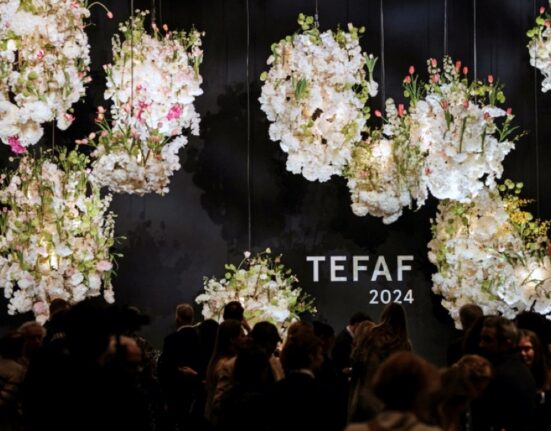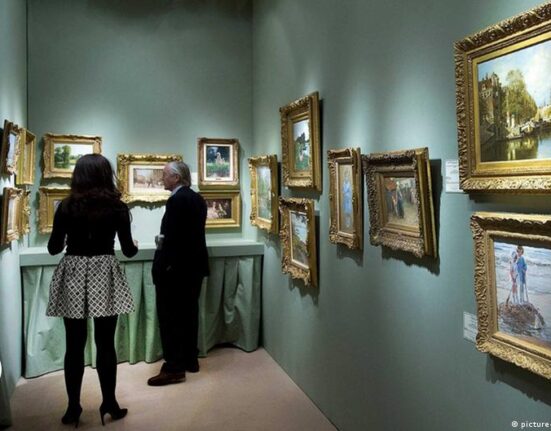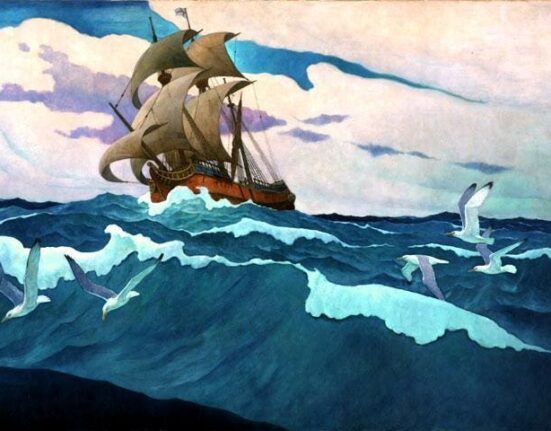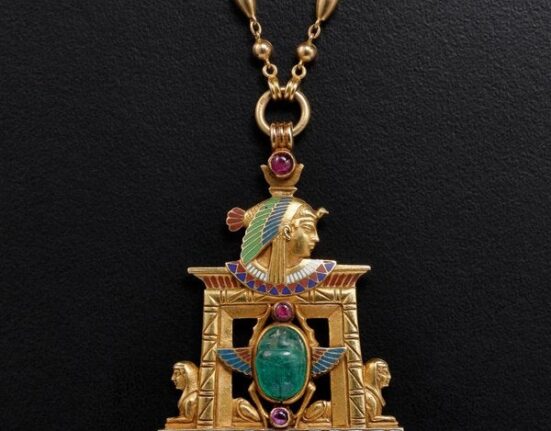Art fairs are a big part of the market. A good fair is a forum for dealers and buyers to do serious business, but also a chance to maintain and rekindle professional relationships. The best dealers and the most conscientious collectors often have known and worked with one another for decades. There’s plenty of warm feeling, and a premium on what I call “fresh meat” – work not seen before. The best fairs vet the art on view for quality and authenticity.
I wrote about The European Fine Arts Fair (TEFAF) in March, when it convened in titanic form in the Dutch city of Maastricht. Its smaller, equally classy annual New York iteration, begun three years ago, opened on Thursday at the Park Avenue Armory. It remains a work in progress, and that detracts nothing from its elegance. The Europeans who run TEFAF are still adjusting to the habits of New Yorkers and of Americans art collectors more broadly. I think they expected their New York fair to attract buyers from throughout the country. But there are lots of fairs in America now, and TEFAF’s New York edition is still new.
The crowd is mostly local. This has surprised TEFAF’s masters, because the Maastricht fair attracts people from all over Europe. It’s easy to get from little country to little country on the continent, though, and Maastricht is charming but otherwise without distractions. In New York, there are a million other things to do.
There’s some discussion of moving the fair to Washington or Chicago or even Nashville. No one from the Upper East Side is going to go to Nashville for an art fair, much less admit they ever bought something there. Washington? It’s a city where everyone lies. It’s infectious. I’d buy a bottle of Perrier there but not much else. Art Basel has cornered Miami, the one place where everyone wants to go in December.
The Armory is expensive. A decent-size booth at TEFAF can cost $75,000, and then there are the big added costs of extras like outfitting the space. That’s for a four-day fair. So the dealers either need to sell some stuff or, if they lose money, calculate that the visibility and chance to schmooze were worth it.
TEFAF offers the highest-quality art and attracts serious collectors and connoisseurs. The other big fairs? Frieze sometimes has the Whiff of the Night: a little shady, a little tacky, with altogether too much that’s shiny new. It appeals to aficionados of contemporary art as well as lots of lookers and scenesters. It and most of the other, big, newer fairs happen on the Hudson River Piers in New York. The spaces there are huge, but a pain to get to. The Piers are enclosed docks, putting you port side. It’s fitting, I guess. You never know what high tide will leave behind.
This year, TEFAF seems to have hit its stride, concentrating on contemporary and modern art with some variation.
The big, corporate New York guns are prominent. Gagosian has a selection of work by the profoundly overrated Roy Lichtenstein. Zwirner has an all-Paul Klee booth, which is topical given the 100th anniversary of the Bauhaus movement, though I thought only one of the works on display was really good. Pace has an all-Dubuffet booth, and I suspect paid the wandering model in the Armory vestibule dressed as a Dubuffet sculpture. Matthew Marks features a 2017 sculpture by Martin Puryear, the star of this year’s American pavilion at the Venice Biennale, an artist I like. But it’s not the best thing Puryear has done, and I wonder why he’s represented by something so . . . so-so.
Wildenstein, the timeless dealer, again shows superb taste. A sparkling $600,000 1975 painting by Sam Gilliam, acrylic with painted canvas collage, is flanked by a wild Monet tropical garden from 1884, as if he time traveled to the future, and a Bonnard garden from 1943. It’s dazzling.


Waddington Custot from London has two impressive things. I was drawn first to a big Milton Avery watercolor from 1938, a time before he was discovered when he was doing lovely rural scenes. It’s $85,000, a great price. Next, I saw a rarity: a Josef Albers painting I loved. Usually, his work is so dry, bright, and hard. But this one is from 1957, the perfect moment for him, and has a surface richness that’s striking and an elegant, muted, dark palette. It’s been in some distinguished shows, too. It’s $690,000 and was on hold when I saw it. I hope whoever reserved it realizes what a great thing it is.

David Tunick is among the most venerable dealers of Old Master works. He has always sold some new things, among them Warhols in the 1970s, but he is renowned mostly for his older stuff. At TEFAF, he shows his responsiveness to modern taste in, as usual, splendid things. A gorgeous Erich Heckel woodcut from 1918, a very early impression of a powerful self-portrait, is going in “the low six figures.”
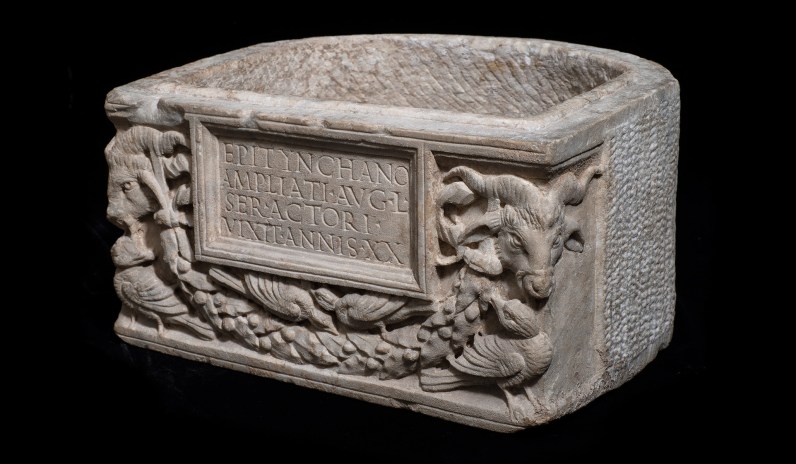
Ede from London is a venerable antiquities dealer. The finest antiquities dealers cater to specialist collectors but also contemporary collectors who like the clean lines, simple palette, and stylized figures of Classical Greek, Roman, and Near Eastern art. The old work gives the new work gravity, and the new work gives the old a dash of pizzazz. I loved Ede’s fabulous Roman cinerary urn from the first century AD, the era of Tiberius, which at $38,000 is the best value of the fair. It held the ashes of, as the boldly graphic Latin inscription tells us, “Epitynchanus, the chief accountant of Ampliatos, a freedman from the imperial household, he lived twenty years.” We don’t know whether our accountant lived to age 20 or balanced Ampliatos’s books for 20 years. But it’s fitting that his urn — his ashes long ago flew the coop — made it to Park Avenue. New York’s becoming more and more like Tiberius’s Rome; we still need guys who are handy with an abacus.

Fun, splendor, imagination, and seriousness of purpose intersect perfectly in Simone Leigh’s 2019 “Las Meninas,” offered at the Luhring Augustine booth. Leigh is American, up and coming, and talented. She has a limiting niche as a political artist focused on gender and race. But if you can take her work aesthetically, without PC cant, you’ll find it has great presence. It’s bold and powerful, beautifully made, and, in terms of materials, strikingly different. The title “Las Meninas” is a reference to Velazquez’s famous 1656 Spanish court picture. Both the Velazquez’s and Leigh’s dresses start as a piece of body architecture called, I think, a farthingale. Surface decoration, I suspect, covers an intricate assemblage of hoops, stuffing, and wooden or metal stays. If I knew nothing about the artist and had only the title and the object at my disposal, I’d see it as a creative translation of Velazquez’s famous Baroque infanta to an African idiom, as grand, as bizarre, and as confining. Both female forms exist in splendid, ceremonial imprisonment. Costumes are literal constructions, and they also construct, or define, who we are. It’s $200,000 and, for me, a treat to see. Leigh has a big sculpture on the High Line near the Whitney. It was good to see her do something at a more human scale.
TEFAF’s brand is simple. It’s the place to go to see the best art, and to learn. I found many surprises and, in every booth, intelligent, passionate dealers and collectors. It’s running until May 7th, and it’s a joy. Go see it if you can.


